Jichun Wu
Filling the gap between GRACE- and GRACE-FO-derived terrestrial water storage anomalies with Bayesian convolutional neural networks
Jan 21, 2021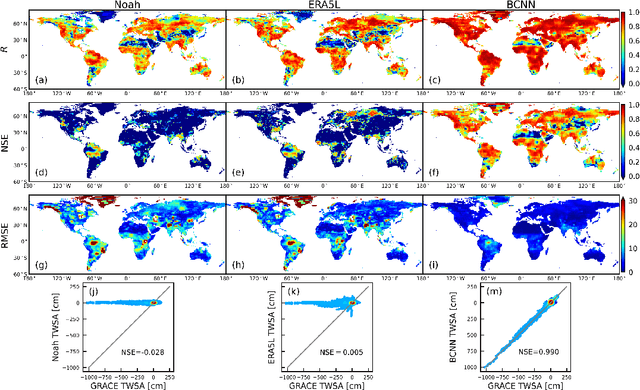
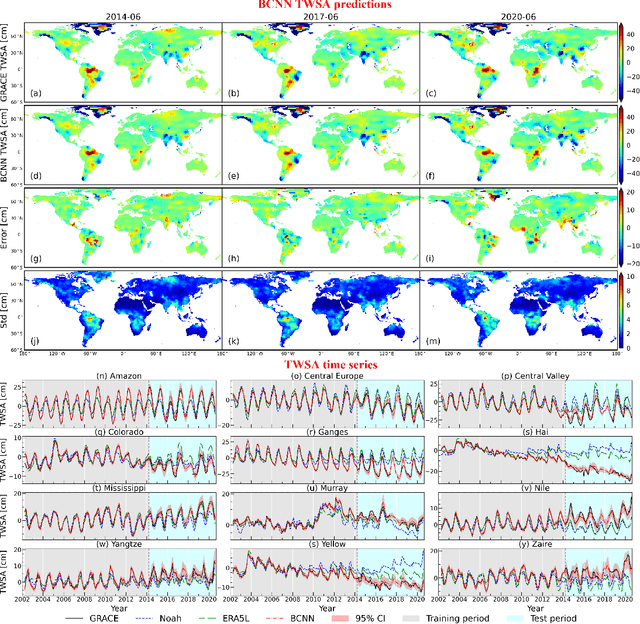
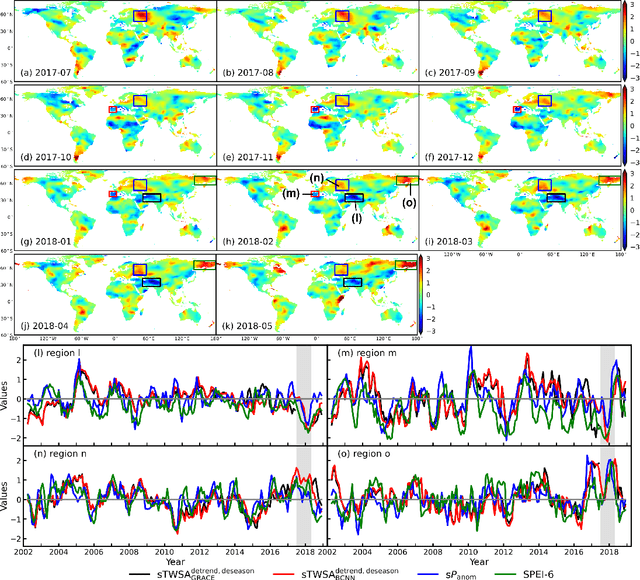
Abstract:There is an approximately one-year observation gap of terrestrial water storage anomalies (TWSAs) between the Gravity Recovery and Climate Experiment (GRACE) satellite and its successor GRACE Follow-On (GRACE-FO). This poses a challenge for water resources management, as discontinuity in the TWSA observations may introduce significant biases and uncertainties in hydrological model predictions and consequently mislead decision making. To tackle this challenge, a Bayesian convolutional neural network (BCNN) is proposed in this study to bridge this gap using climatic data as inputs. Enhanced by integrating recent advances in deep learning, BCNN can efficiently extract important features for TWSA predictions from multi-source input data. The predicted TWSAs are compared to the hydrological model outputs and three recent TWSA prediction products. Results suggest the superior performance of BCNN in bridging the gap. The extreme dry and wet events during the gap period are also successfully identified by BCNN.
Integration of adversarial autoencoders with residual dense convolutional networks for inversion of solute transport in non-Gaussian conductivity fields
Jul 31, 2019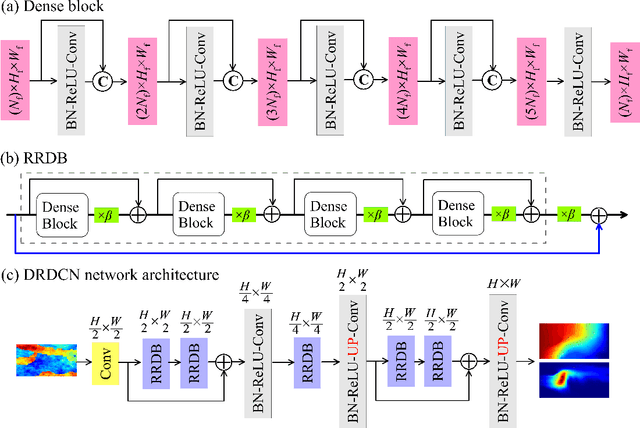
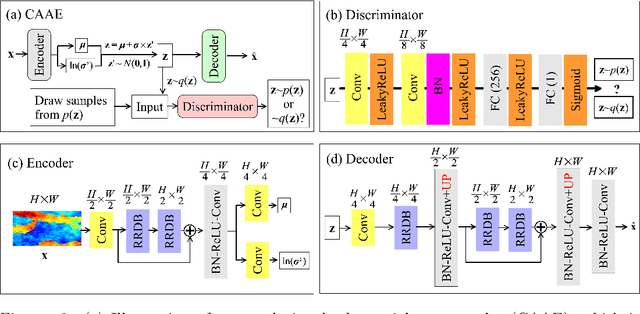
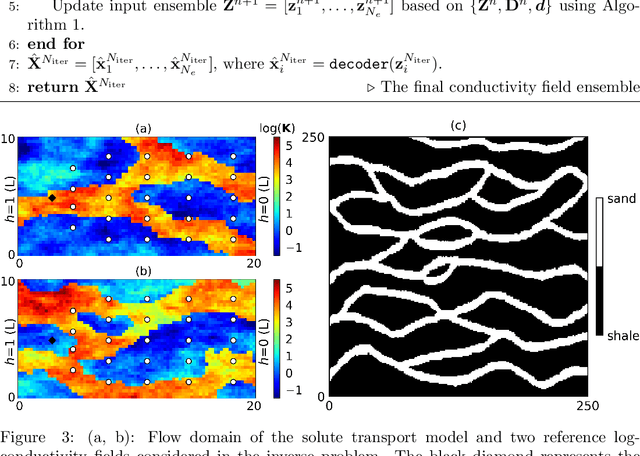
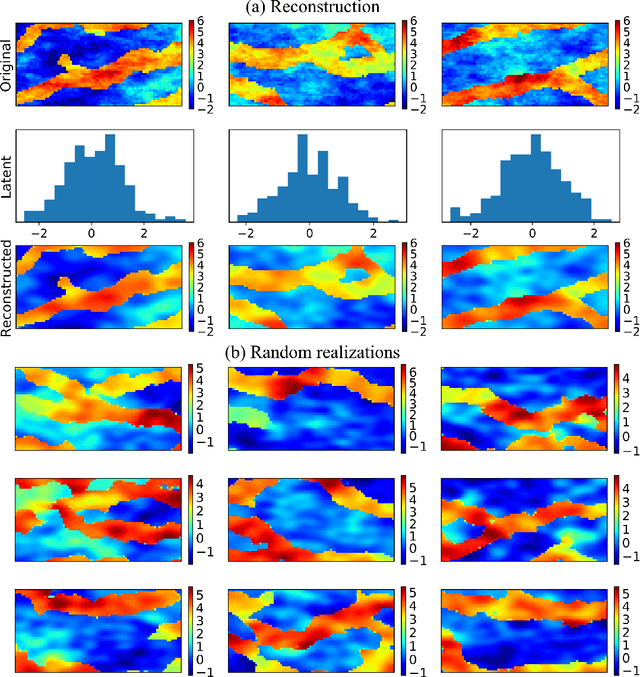
Abstract:Characterization of a non-Gaussian channelized conductivity field in subsurface flow and transport modeling through inverse modeling usually leads to a high-dimensional inverse problem and requires repeated evaluations of the forward model. In this study, we develop a convolutional adversarial autoencoder (CAAE) network to parameterize the high-dimensional non-Gaussian conductivity fields using a low-dimensional latent representation and a deep residual dense convolutional network (DRDCN) to efficiently construct a surrogate model for the forward model. The two networks are both based on a multilevel residual learning architecture called residual-in-residual dense block. The multilevel residual learning strategy and the dense connection structure in the dense block ease the training of deep networks, enabling us to efficiently build deeper networks that have an essentially increased capacity for approximating mappings of very high-complexity. The CCAE and DRDCN networks are incorporated into an iterative local updating ensemble smoother to formulate an inversion framework. The integrated method is demonstrated using a synthetic solute transport model. Results indicate that CAAE is a robust parameterization method for the channelized conductivity fields with Gaussian conductivities within each facies. The DRDCN network is able to obtain an accurate surrogate model of the forward model with high-dimensional and highly-complex concentration fields using relatively limited training data. The CAAE paramterization approach and the DRDCN surrogate method together significantly reduce the number of forward model runs required to achieve accurate inversion results.
Deep autoregressive neural networks for high-dimensional inverse problems in groundwater contaminant source identification
Dec 22, 2018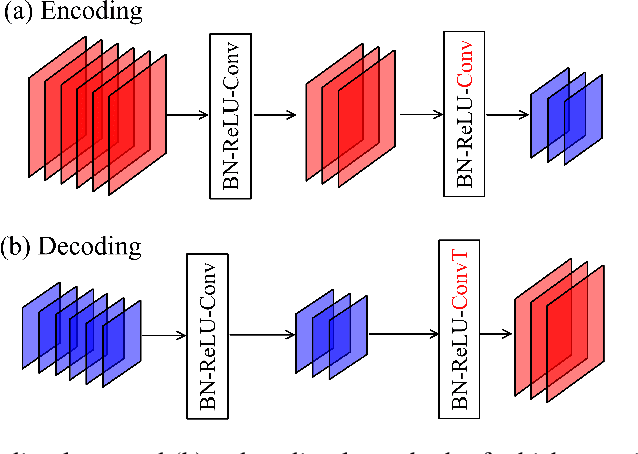

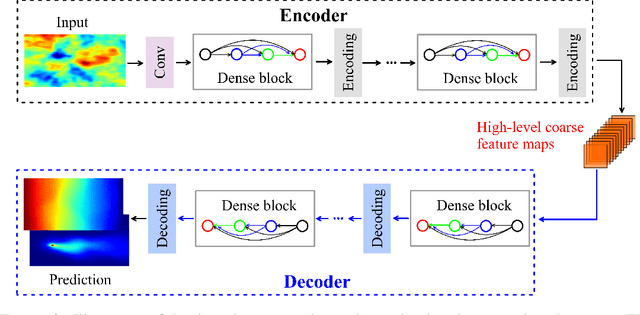
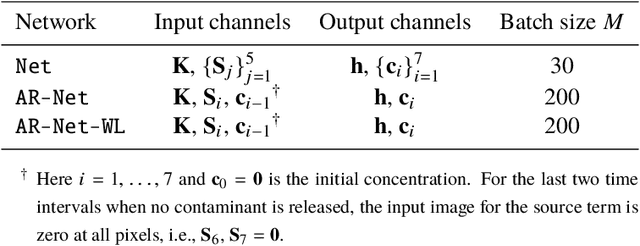
Abstract:Identification of a groundwater contaminant source simultaneously with the hydraulic conductivity in highly-heterogeneous media often results in a high-dimensional inverse problem. In this study, a deep autoregressive neural network-based surrogate method is developed for the forward model to allow us to solve efficiently such high-dimensional inverse problems. The surrogate is trained using limited evaluations of the forward model. Since the relationship between the time-varying inputs and outputs of the forward transport model is complex, we propose an autoregressive strategy, which treats the output at the previous time step as input to the network for predicting the output at the current time step. We employ a dense convolutional encoder-decoder network architecture in which the high-dimensional input and output fields of the model are treated as images to leverage the robust capability of convolutional networks in image-like data processing. An iterative local updating ensemble smoother (ILUES) algorithm is used as the inversion framework. The proposed method is evaluated using a synthetic contaminant source identification problem with 686 uncertain input parameters. Results indicate that, with relatively limited training data, the deep autoregressive neural network consisting of 27 convolutional layers is capable of providing an accurate approximation for the high-dimensional model input-output relationship. The autoregressive strategy substantially improves the network's accuracy and computational efficiency. The application of the surrogate-based ILUES in solving the inverse problem shows that it can achieve accurate inversion results and predictive uncertainty estimates.
Deep convolutional encoder-decoder networks for uncertainty quantification of dynamic multiphase flow in heterogeneous media
Jul 02, 2018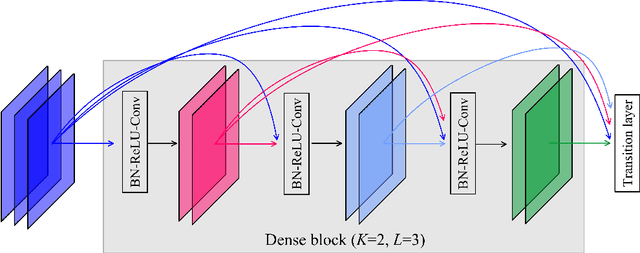
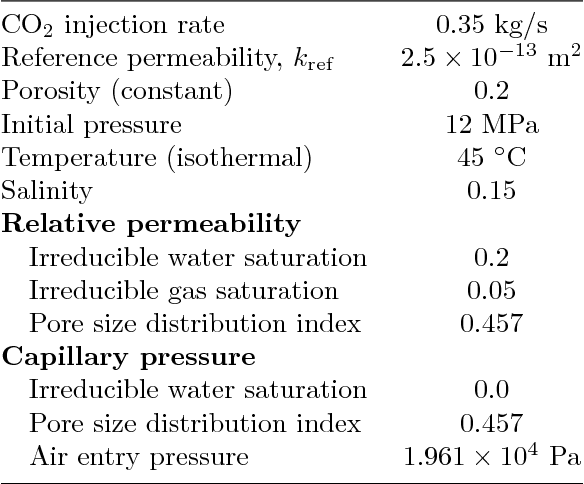
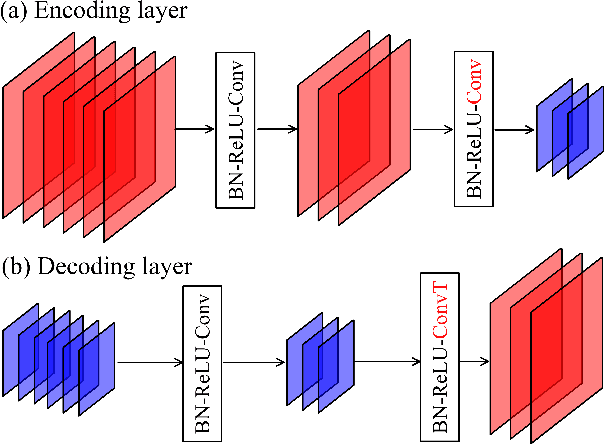
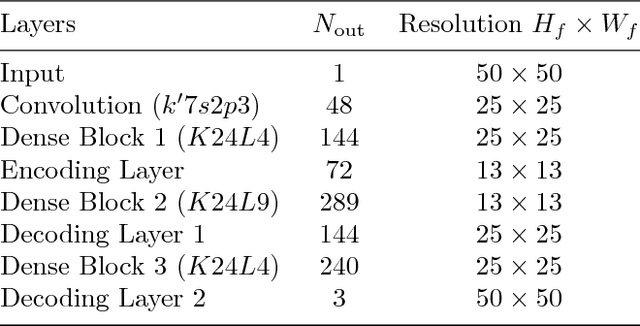
Abstract:Surrogate strategies are used widely for uncertainty quantification of groundwater models in order to improve computational efficiency. However, their application to dynamic multiphase flow problems is hindered by the curse of dimensionality, the saturation discontinuity due to capillarity effects, and the time-dependence of the multi-output responses. In this paper, we propose a deep convolutional encoder-decoder neural network methodology to tackle these issues. The surrogate modeling task is transformed to an image-to-image regression strategy. This approach extracts high-level coarse features from the high-dimensional input permeability images using an encoder, and then refines the coarse features to provide the output pressure/saturation images through a decoder. A training strategy combining a regression loss and a segmentation loss is proposed in order to better approximate the discontinuous saturation field. To characterize the high-dimensional time-dependent outputs of the dynamic system, time is treated as an additional input to the network that is trained using pairs of input realizations and of the corresponding system outputs at a limited number of time instances. The proposed method is evaluated using a geological carbon storage process-based multiphase flow model with a 2500-dimensional stochastic permeability field. With a relatively small number of training data, the surrogate model is capable of accurately characterizing the spatio-temporal evolution of the pressure and discontinuous CO2 saturation fields and can be used efficiently to compute the statistics of the system responses.
 Add to Chrome
Add to Chrome Add to Firefox
Add to Firefox Add to Edge
Add to Edge